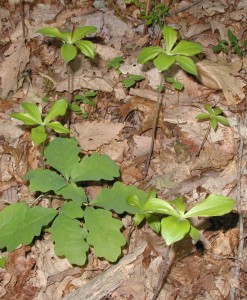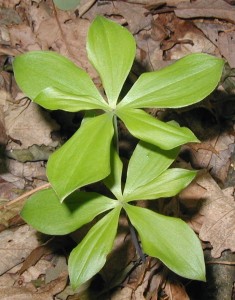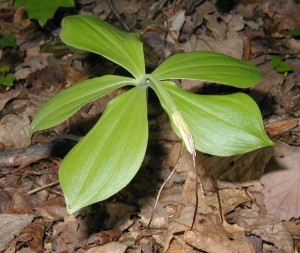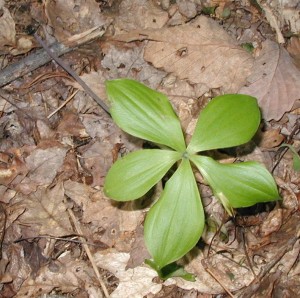
- Image via Wikipedia
Walking near the edge of the farmer’s field you can see many weeds where the open field meets the trees. On 15 May 2010 I saw this familiar weed, Cleavers, that grows in fields, waste places and along the side of the road.
A few days earlier there was an untouched stand of this weed and the large grouping looked pretty cool. Always have your camera with you! When I came back to photograph the weeds, I saw that someone had been there before me.
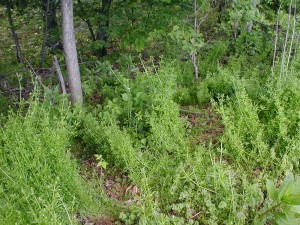
These weeds get about three feet tall and are prone to laying over to the side when they get that tall. The circular patches with the weed tramped down tell the story. The tallness of the weeds would serve to hide the deer even as they lay there.
Cleavers, Galium aparine, is a member of the Bedstraw Family, Rubiaceae. I guess it makes sense that an animal would use a plant referred to as bedstraw to make their bed. People figure some things out for themselves and other things we learn by watching. If people witnessed these large mammals lying down among the cleavers or bedstraw, people probably tried it for themselves. Early botanists may have named this family of plants because of their usefulness as bed stuffing.
Small white flowers cluster on stalks that project from the leaf axils.
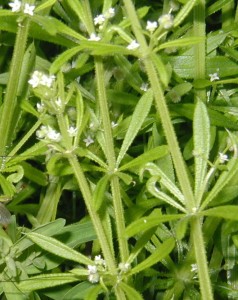
Leaves are in whorl formation with six to eight, mostly eight, leaves. Cleavers has a sticky feel that is due to the tiny prickles that you can just see on the stems and leaves in the photo above. (Click on photo for a larger image.)
The other day I went back up to the field to see if I could get some better pictures of the cleavers flowers, but the farmer had sprayed some herbicide to ready the field for planting. The cleavers had already died back, which reinforces the idea that you should take more pictures than you think you need to assure that you get at least one good shot.

